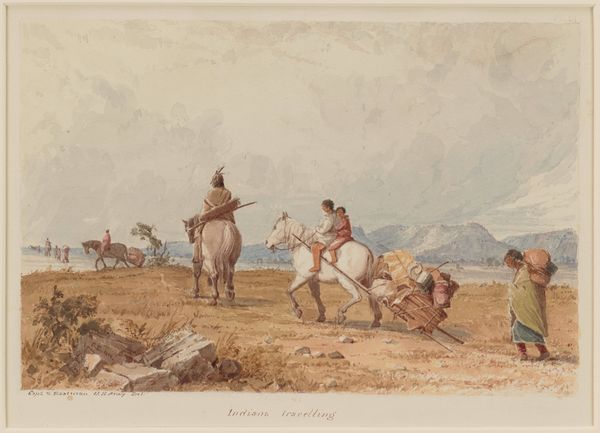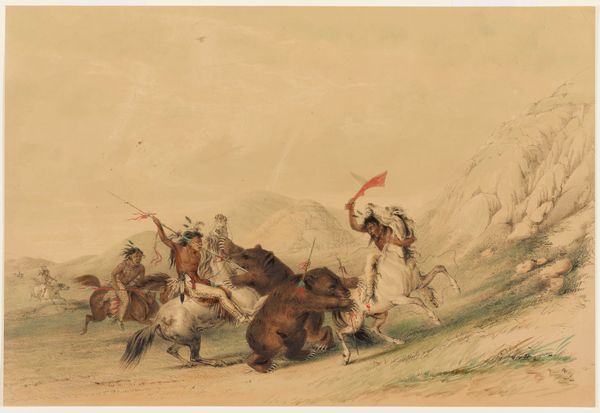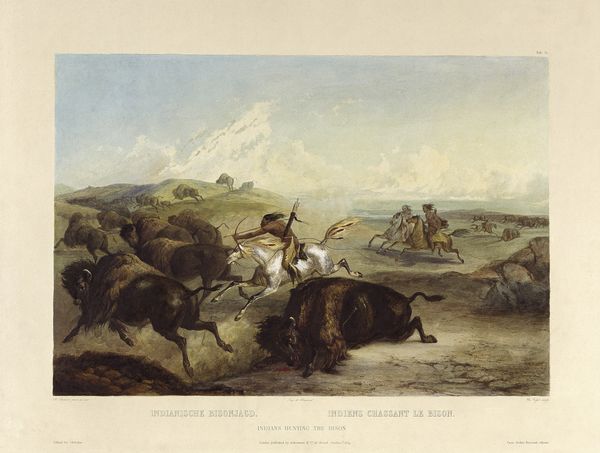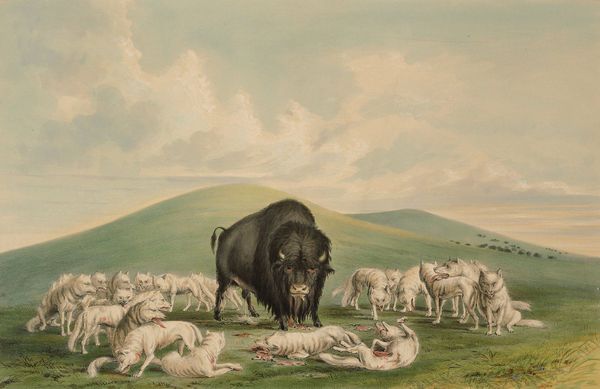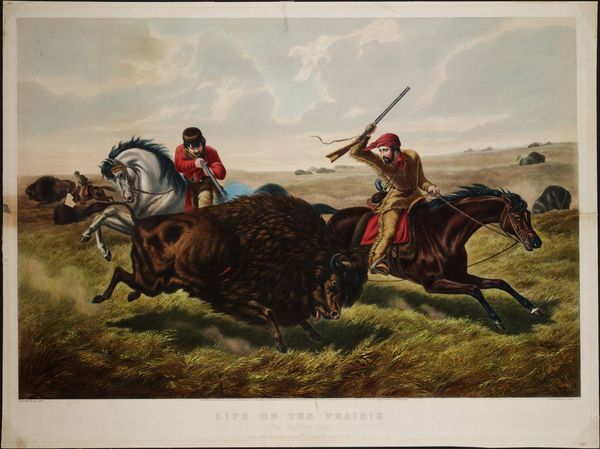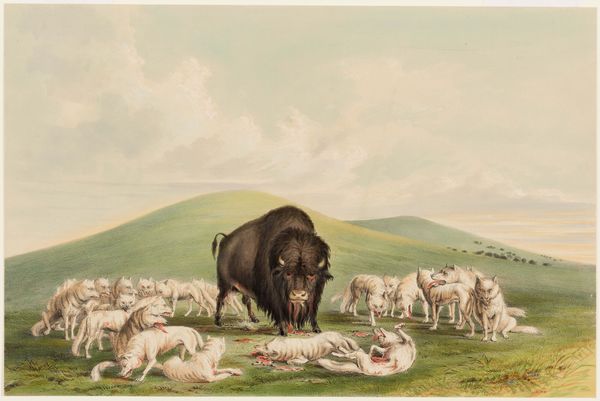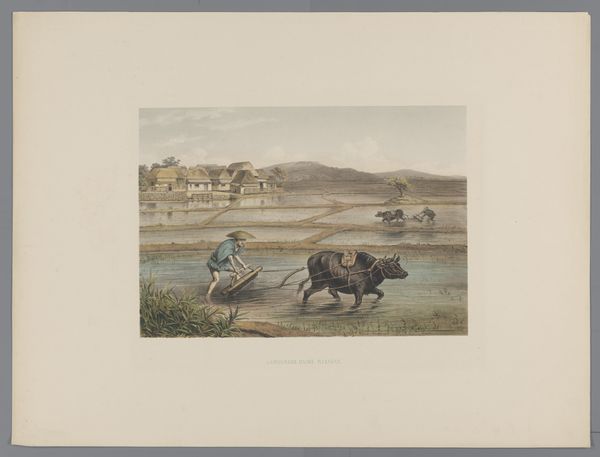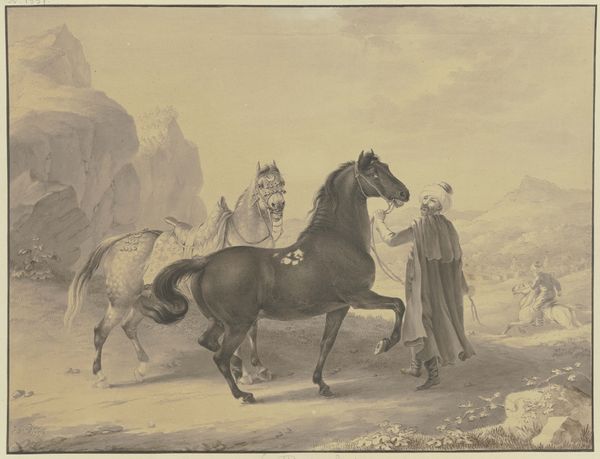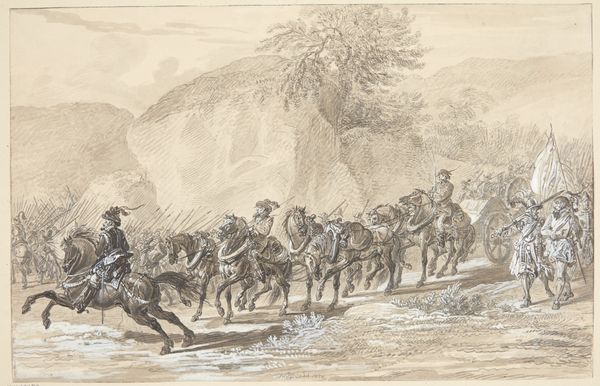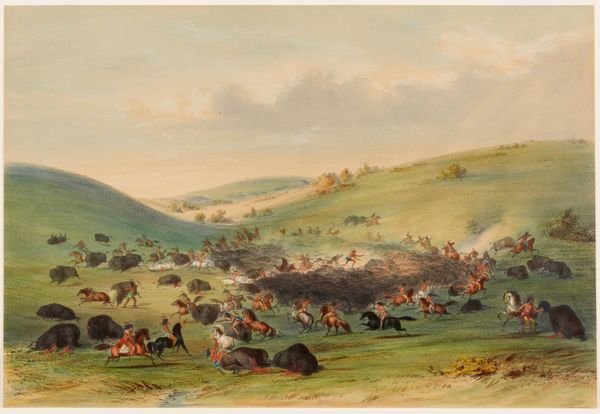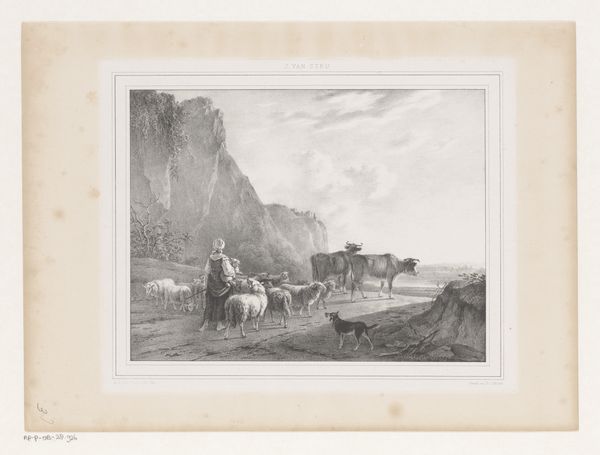
gouache
#
narrative-art
#
gouache
#
landscape
#
oil painting
#
romanticism
#
watercolour illustration
#
watercolor
Dimensions: 12 x 17 5/8 in. (30.48 x 44.77 cm) (image, sheet)
Copyright: Public Domain
Editor: So this is George Catlin's "Buffalo Hunt," from 1844, at the Minneapolis Institute of Art. It seems to be watercolor and maybe some oil? There's a real sense of motion with the buffalo and horses... How do you interpret this work? Curator: Looking at this piece, I immediately consider the material conditions of its production and its relationship to the larger context of westward expansion. It's easy to get swept up in the romanticism of the scene, but we must think about how watercolors like this were replicated through printmaking and then circulated, effectively shaping public perceptions of the American West. Editor: So it’s less about the hunt itself and more about how people consumed this image of the hunt? Curator: Precisely! The method of reproduction and dissemination are key here. Think about the labor involved in creating these images, the woodcutters, the printers... all contributing to a specific narrative. How does this imagery fuel expansionist policies and impact Indigenous communities' access to their traditional hunting grounds? This wasn’t just art; it was a commodity within a rapidly changing political landscape. Editor: That shifts my view quite a bit. It's a nice-looking scene, but there's a much bigger picture when you look at the mechanics of its creation and distribution. Curator: Exactly! We should always question the role of art in shaping our understanding of history and the socio-economic conditions that underpin artistic production. Editor: Well, thanks for highlighting what is under the surface in this piece. It's something I will certainly remember for other works we talk about.
Comments
No comments
Be the first to comment and join the conversation on the ultimate creative platform.


